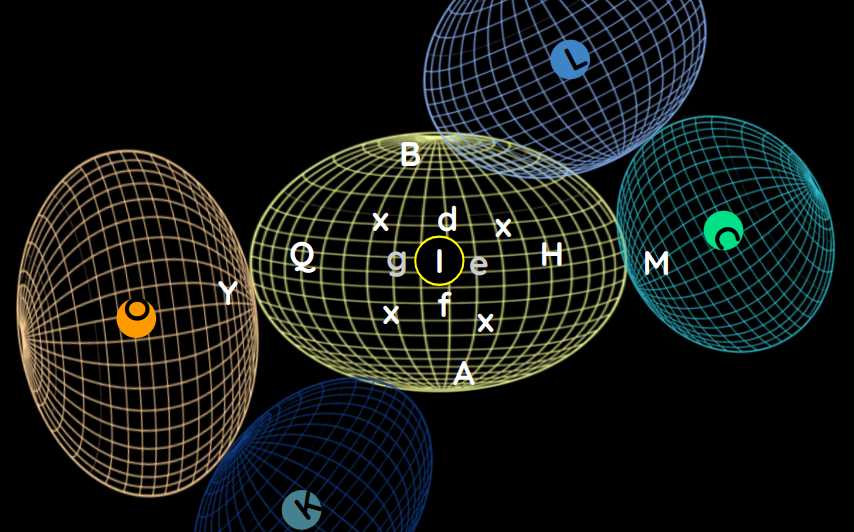The Channels for the Sun's Magnetic Field
Table of Contents
Superphysics Note
105. There are many channels in coronal holes through which virtual photons freely pass
Let Star I be entirely covered by the coronal hole defg.

It is not so dense. This allows it to have many pores or channels through which all the fire-aether, including those virtual photons, can pass.
The coronal hole was very soft and decompressed at the beginning of its formation. This is why such pores were easily formed in it.
As it became denser, these virtual photons and others of the fire-aether continually passed through them, preventing them from being completely closed.
They were only narrowed to the point that no particles thicker than the virtual photons could pass through.
The channels that admit virtual photons coming from one pole cannot admit:
-
the exited particles if they try to return
-
the particles coming from the other pole
- This is because they are twisted in the opposite direction.
106. The arrangement of these channels and why the virtual photons cannot regress through them
The virtual photons of the fire-aether come from the area of Pole A, not from a single point.
They do not head towards a single point I. Instead, they go towards the whole middle region of the sky HIQ.
They form channels in the spot defg along straight lines parallel to the axis fd, or slightly converging towards d on both sides.
- The entrances to these channels are scattered over the entire surface of the hemisphere
efg. - The exits are on the opposite hemisphere
edg.
Thus, the virtual photons coming from A can easily enter through efg and exit through edg. But they can never return through edg or exit through efg.
The entire coronal hole consists only of the smallest fragments of the fire-aether. These adhere to each other, forming small branches.
The virtual photons coming from f thus had to bend the ends of these branches towards d in the channels.
Therefore, if they were to regress through the same channels from d to f, the slightly raised ends of these branches would obstruct their passage.
Similarly, the virtual photons coming from B carved out other channels for themselves, with entrances scattered over the entire surface edg and exits on the opposite side efg.
107. Why particles coming from one pole do not pass through the same channels as those coming from the other
These channels are also carved in the shape of spirals, resembling the shape of the virtual photons that they admit.
Therefore, the channels that are open to one set are not open to those coming from the opposite pole and twisted in the opposite direction.
108. How the fire-aether flows through these channels
Thus, the fire-aether can reach Star I through these channels from both poles.
Its virtual photons are thicker than the others. Therefore, they have more force to move in straight lines. And so, they usually do not remain in the star.
Entering through f, they immediately exit through d. There they encounter:
- the air-aether globules or
- the fire-aether coming from
B
They then cannot proceed further in straight lines. Instead, they are reflected in all directions through the surrounding earth-aether [plasma] xx, returning towards the hemisphere efg.
As many as can enter the channels of the coronal holes covering the star pass through them again from f to d.
By continuously passing through the middle of the star and returning through the surrounding earth-aether [plasma], they form a sort of vortex there.
Those that cannot be captured by these channels are either:
- dissolved by the impact of the earth-aether [plasma] particles or
- forced to go into the sky through the nearby parts of the ecliptic
QH.*
Superphysics Note
The virtual photons that reach the surface of Star I at every moment are not so numerous.
They cannot fill all the channels carved to their size in the spots efg. This is because even in the sky they do not fill all the gaps between the air-aether globules.
But a great amount of subtler matter becomes mixed with them due to the various movements of these globules.
This subtler matter would enter those channels if the virtual photons, reflected from the other hemisphere of the star, did not have greater force to occupy them.
What applies to the virtual photons entering through the hemisphere efg also applies to those entering through the hemisphere edg.
They have carved different channels for themselves, through which most of them flow from d to f, into the Star I and the spots surrounding it.
Then, reflected in all directions through the ether xx, they return to d, while as many dissolve or exit towards the ecliptic as new ones come from pole B.